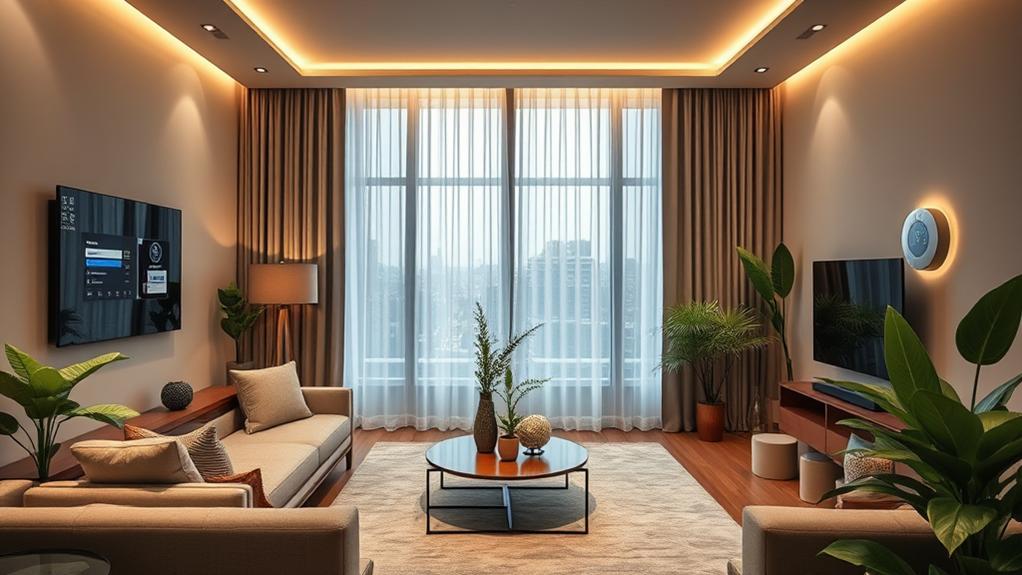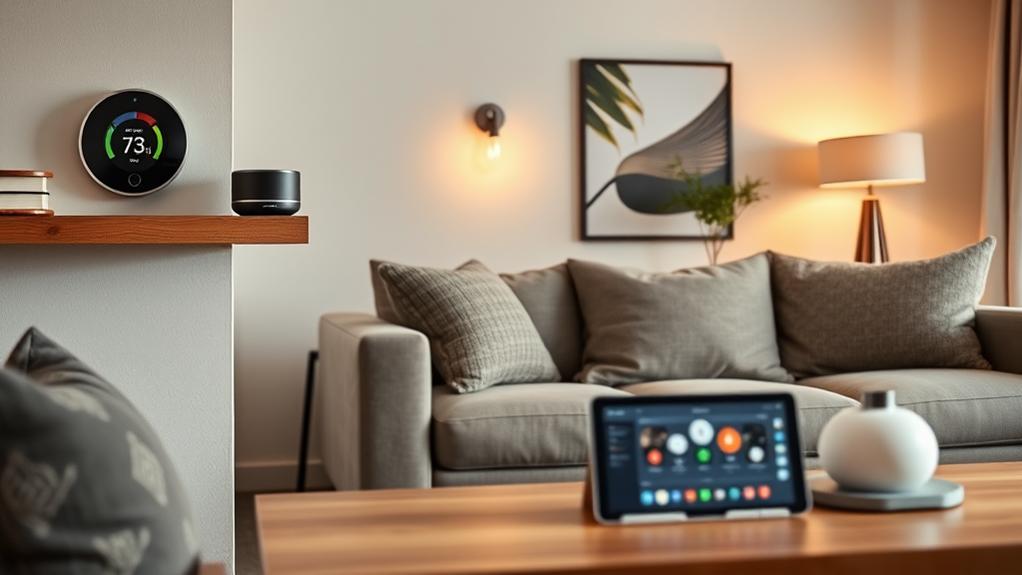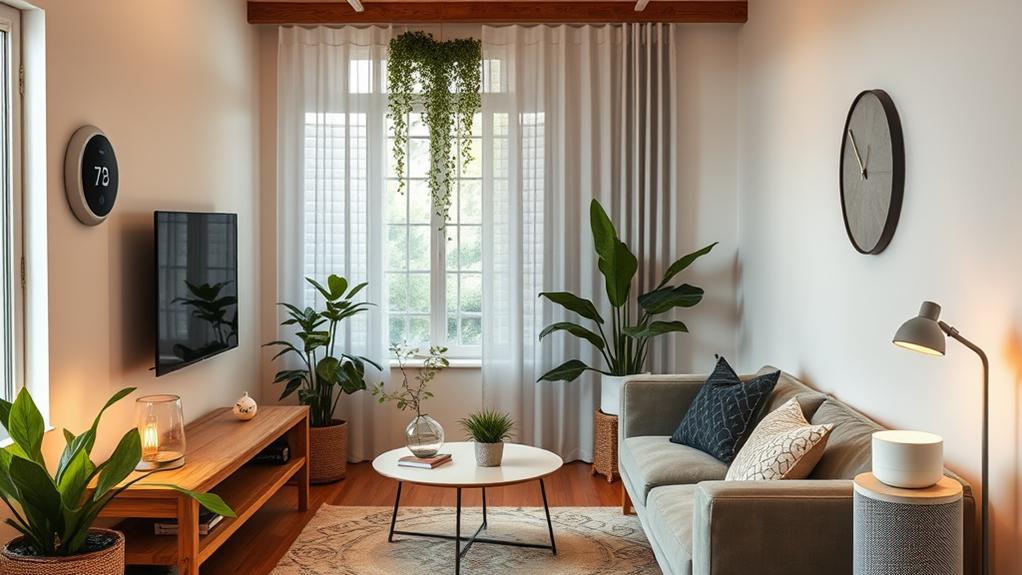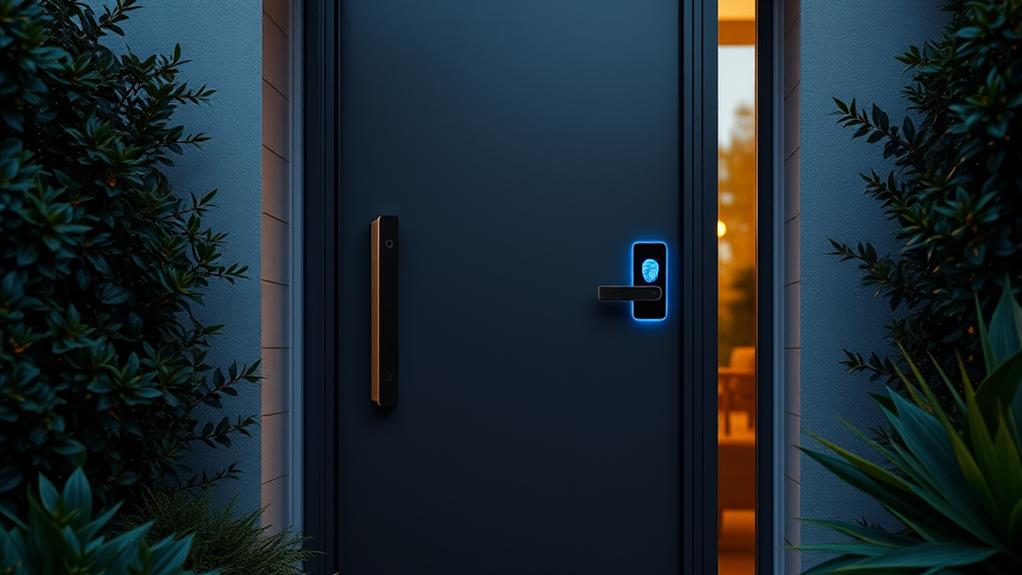Imagine your home as a well-orchestrated symphony, where every device plays in harmony to enhance your daily life. Investing in a smart home isn't just about gadgets; it's about creating a seamless environment that caters to your needs. From increased security to energy efficiency, the benefits are compelling. But what does this mean for your lifestyle and long-term savings? Understanding these advantages could change your perspective on home investment.
Benefits of Smart Home Technology
Smart home technology offers a wealth of advantages that can transform your daily life. With smart devices integrated into your home, you'll experience enhanced convenience like never before. Imagine controlling your lights, thermostat, and even appliances with just a voice command or a simple tap on your smartphone. This level of accessibility makes managing your home effortless, allowing you to focus on what truly matters.
In addition to convenience, smart home technology boosts your comfort. You can create personalized settings to match your lifestyle, adjusting the ambiance of each room to suit your mood or activity. Whether it's dimming the lights for a movie night or setting the perfect temperature for a cozy evening, you've got complete control.
Moreover, these technologies enhance your home's security. With smart cameras, motion sensors, and smart locks, you can monitor your property in real-time, receiving alerts on your phone whenever there's unusual activity. This peace of mind guarantees you feel safe at home and away.
Ultimately, investing in smart home technology not only simplifies your life but also elevates your living experience, making it more enjoyable and secure.
Cost Savings With Automation
Leveraging automation in your home can lead to significant cost savings over time. By integrating smart devices, you can optimize energy usage, reducing your utility bills. For instance, smart thermostats learn your schedule and adjust heating and cooling accordingly, guaranteeing you're not wasting energy when you're away.
Additionally, smart lighting systems allow you to control lights remotely or set schedules, which means lights won't be left on unnecessarily. With motion sensors, you can ascertain that lights only activate when someone's in the room, further cutting down on energy waste.
Moreover, automated appliances can help you manage water usage efficiently. Smart irrigation systems, for instance, water your garden based on weather conditions and moisture levels, preventing overwatering and lowering your water bill.
You can also save on maintenance costs. Smart devices can alert you when something needs attention, like a leaky faucet or a malfunctioning appliance, allowing you to address issues before they become expensive repairs.
Enhanced Home Security Features
With advanced technology at your fingertips, enhancing home security has never been easier. Smart home devices like security cameras, motion sensors, and smart locks provide you with a thorough security system that fits your lifestyle. You can monitor your home in real-time from anywhere, giving you peace of mind whether you're at work or on vacation.
Imagine receiving instant alerts on your smartphone when someone approaches your front door or when a window is opened unexpectedly. Smart cameras allow you to see what's happening around your property, day or night, ensuring you're always in the loop.
Plus, features like two-way audio let you communicate with visitors or potential intruders, adding an extra layer of security.
Smart locks take convenience to another level. You can lock or open your doors remotely, grant access to trusted friends or service providers, and even check the status of your locks with just a tap.
Investing in smart home security not only protects your property but also enhances your overall lifestyle. With these advanced features, you can take control of your home security like never before.
Energy Efficiency and Sustainability
Energy efficiency is more than just a trend; it's a smart investment that benefits both your wallet and the planet. By integrating smart home technology, you can greatly reduce your energy consumption. Smart thermostats, for instance, learn your habits and adjust heating and cooling accordingly, ensuring you're not wasting energy when you're away. This not only lowers your utility bills but also minimizes your carbon footprint.
Smart lighting systems allow you to control the brightness and usage of lights, so you're not keeping them on unnecessarily. With timers and motion sensors, lights can turn off automatically when you leave a room.
Additionally, energy-efficient appliances connected to your smart home system can help track usage and provide insights on how to save even more energy.
Investing in solar panels can further amplify your sustainability efforts. Many smart home systems can integrate with solar setups, allowing you to monitor energy production and consumption in real time.
Ultimately, by embracing energy efficiency and sustainability through smart home technologies, you're making a responsible choice that pays off financially and contributes to a healthier environment for future generations.
Convenience and Lifestyle Improvements
Smart home technology not only enhances energy efficiency but also transforms your daily life, making it more convenient and enjoyable. Imagine walking into your home, and the lights automatically adjust to your preferred brightness, the thermostat sets the perfect temperature, and your favorite playlist starts playing—all without you lifting a finger.
These seamless integrations allow you to focus on what truly matters rather than fumbling with multiple devices.
With smart home devices, you can manage your home from anywhere. Need to check if you left the lights on? Just pull out your smartphone. Want to preheat the oven while you're on your way back from work? No problem. You can even create routines that automate daily tasks, like having your coffee brewed before you wake up.
Safety and security also improve through smart technology. You can monitor your home with cameras and receive alerts if anything seems off. Plus, smart locks let you grant access to visitors remotely, so you won't have to worry about lost keys or unexpected guests.
Investing in a smart home truly enhances your lifestyle, making day-to-day living smoother and more enjoyable.
DIY Smart Home Integration Tips
Creating a connected home doesn't have to be overwhelming or expensive. Start small by choosing one room to focus on, like your living room or kitchen. Identify your needs—do you want better lighting, security, or entertainment?
Next, research DIY smart home hubs that can link multiple devices. Platforms like SmartThings or Hubitat let you manage everything from a single app. Once you've chosen a hub, invest in a few compatible devices. Look for products that work well with your hub and each other.
You can also enhance your home's connectivity with smart plugs. These allow you to control non-smart devices from your smartphone. Consider installing smart bulbs for customizable lighting. They can change colors and be set on schedules, adding convenience and ambiance.
Don't forget about security! Simple DIY options like smart cameras or doorbell cameras can be set up without professional help.
Popular Smart Home Devices
When you start integrating smart home devices, it's important to know which ones are popular and effective. These devices can enhance your everyday life, making your home more comfortable, secure, and energy-efficient.
Here are three top smart home devices to evaluate:
- Smart Speakers: Devices like Amazon Echo or Google Nest Hub let you control all your smart home gadgets using voice commands. They can play music, set reminders, and even answer questions, making them a versatile addition to your home.
- Smart Thermostats: Products like the Nest Learning Thermostat learn your schedule and preferences, adjusting the temperature accordingly. This not only keeps you comfortable but can also save you money on your energy bills.
- Smart Security Cameras: Brands like Ring or Arlo offer easy-to-install cameras that let you monitor your home remotely. You can receive alerts and watch live feeds, ensuring peace of mind whether you're home or away.
Future Trends in Smart Homes
As technology evolves at a rapid pace, the future of smart homes looks increasingly promising and interconnected. You'll likely see homes that not only adapt to your lifestyle but also learn your preferences over time. Imagine a system that automatically adjusts your heating, lighting, and security based on your daily routines and habits.
With advancements in artificial intelligence and machine learning, smart home devices will become more intuitive, anticipating your needs before you even express them.
Furthermore, integration with renewable energy sources could become standard. You might generate your own solar power and use smart devices to manage energy consumption efficiently, ultimately lowering your bills.
The Internet of Things (IoT) will expand, connecting more devices seamlessly, allowing you to control everything from your fridge to your thermostat with a single app.
Data privacy will also be a vital factor. Future smart homes will likely incorporate advanced security measures to protect your information.
As you consider investing in a smart home, staying informed about these trends will help you make choices that enhance your living experience while providing comfort, convenience, and sustainability.
Getting Started With DIY Automation
DIY automation in your home can be an exciting and rewarding project, allowing you to tailor your living space to your specific needs.
Whether you want to enhance convenience, improve energy efficiency, or boost security, getting started doesn't have to be overwhelming.
Here are three essential steps to kick off your DIY automation journey:
- Identify Your Goals: Decide what you want to achieve with automation. Is it controlling lights remotely, managing your thermostat, or securing your home with cameras? Clear goals will guide your decisions.
- Choose the Right Devices: Research smart devices that fit your goals. Look for compatibility with popular platforms like Amazon Alexa or Google Home. Start with a few core devices, like smart bulbs or plugs, before expanding your system.
- Set Up and Experiment: Once you've chosen your devices, follow the installation instructions. Don't hesitate to experiment with settings and routines to find what works best for you.
As you grow more comfortable, you can integrate more complex automation features.
With these steps, you're well on your way to creating a smart home tailored to your lifestyle!
Conclusion
Investing in a smart home isn't just about gadgets; it's about transforming your life. Imagine waking up to the perfect temperature, knowing your home is secure, and saving money effortlessly. As technology rapidly evolves, the question isn't whether you should invest, but rather—can you afford not to? The future of living is at your fingertips, waiting to enhance your comfort and peace of mind. Are you ready to embrace the change that could redefine your everyday life?











